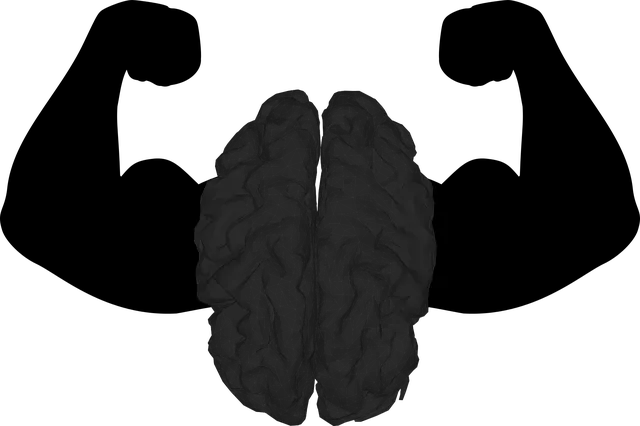The Kaiser Permanente mental health center in Littleton is recognized for its innovative, holistic approach to mental healthcare, integrating diverse therapeutic methods and empowering patients with coping skills. An effective evaluation framework combines qualitative (interviews, focus groups) and quantitative (surveys, statistical tracking) methods to assess key objectives like access, stigma reduction, and emotional regulation. Quantitative techniques track metrics such as anxiety levels and stress reduction, while qualitative methods delve into participants' real-world experiences and perspectives. Integrating feedback from diverse stakeholders ensures programs remain aligned with community needs, fostering continuous improvement and tailored services.
“Explore effective evaluation methods for mental wellness programs, inspired by the pioneering Kaiser Permanente Mental Health Center Littleton Model. This comprehensive guide delves into key components of a robust evaluation framework, from quantitative assessment techniques to qualitative insights and stakeholder feedback integration. Discover how evidence-based practices can optimize program impact and improve mental health outcomes. Learn from the best practices outlined in this article to enhance your organization’s mental wellness initiatives.”
- Understanding the Kaiser Permanente Mental Health Center Littleton Model
- Key Components of an Effective Evaluation Framework
- Quantitative Assessment Techniques for Mental Wellness Programs
- Qualitative Methods and Their Role in Program Evaluation
- Integrating Feedback from Stakeholders and Participants
Understanding the Kaiser Permanente Mental Health Center Littleton Model

The Kaiser Permanente Mental Health Center Littleton Model stands as a beacon of innovation and holistic care within the mental healthcare landscape. This model is renowned for its comprehensive approach, integrating various therapeutic modalities to address the multifaceted needs of individuals seeking mental wellness support. By fostering an environment that prioritizes Cultural Sensitivity in Mental Healthcare Practice, the center ensures tailored interventions that resonate with diverse populations.
One of the key strengths lies in its focus on empowering individuals through Coping Skills Development and Inner Strength Development programs. These initiatives are designed to equip clients with practical tools to navigate life’s challenges, promoting self-reliance and resilience. The Kaiser Permanente Mental Health Center Littleton Model exemplifies a successful strategy for evaluating and enhancing mental wellness programs, setting a benchmark for other healthcare facilities striving to provide exceptional, culturally sensitive care.
Key Components of an Effective Evaluation Framework

An effective evaluation framework for mental wellness programs at a Kaiser Permanente mental health center in Littleton should encompass several key components. Firstly, it must establish clear and measurable objectives that align with the program’s goals, such as improving access to care, reducing stigma associated with mental health issues, or enhancing emotional regulation among targeted populations. These objectives serve as the foundation for gauging success and identifying areas for improvement.
Secondly, the evaluation framework should integrate a diverse range of methods, including qualitative and quantitative data collection techniques. Qualitative methods, such as interviews, focus groups, or surveys with open-ended questions, can provide deeper insights into participants’ experiences, perceptions, and barriers to mental wellness. Quantitative measures, on the other hand, offer statistically sound data for tracking progress in areas like depression prevention, public awareness campaigns development, and overall program impact. By combining both approaches, the evaluation ensures a comprehensive understanding of the program’s effectiveness and informs evidence-based decision-making at the Kaiser Permanente mental health center Littleton.
Quantitative Assessment Techniques for Mental Wellness Programs

Quantitative assessment techniques play a pivotal role in evaluating mental wellness programs, offering structured and measurable insights into their effectiveness. These methods, employed at leading centers like the Kaiser Permanente mental health center in Littleton, involve administering standardized questionnaires, surveys, and tests designed to capture participants’ symptoms, attitudes, and behaviors before and after program implementation. By collecting data on key metrics such as anxiety levels, depression scores, and stress reduction, professionals can objectively gauge the impact of interventions.
This quantitative approach allows for the comparison of pre-post changes, identifying which components of a mental wellness program are most successful in boosting confidence and reducing stress. It also facilitates tracking progress over time, enabling continuous improvement based on evidence gathered from these rigorous assessments. Such data-driven evaluations ensure that programs remain aligned with the evolving needs of participants, ultimately enhancing their overall mental wellness.
Qualitative Methods and Their Role in Program Evaluation

Qualitative methods play a pivotal role in evaluating mental wellness programs, offering a deep dive into participants’ experiences and perspectives. Unlike quantitative approaches that focus on statistics and numerical data, qualitative methods explore the nuances of human interactions, emotions, and behaviours. These techniques are particularly valuable for understanding complex social issues like mental health within the context of a Kaiser Permanente mental health center in Littleton.
By employing methods such as interviews, focus groups, and observation, researchers can gather rich, descriptive data. This allows them to assess not just the effectiveness of programs but also their impact on participants’ lives. For instance, evaluating a Healthcare Provider Cultural Competency Training program could involve qualitative inquiries into how staff interactions with diverse patients foster trust and improve care. Similarly, examining Compassion Cultivation Practices might entail exploring individuals’ emotional responses and personal growth through narrative sharing or mindfulness exercises.
Integrating Feedback from Stakeholders and Participants

Integrating feedback from stakeholders and participants is a vital component of evaluating mental wellness programs at centers like the Kaiser Permanente mental health center in Littleton. This collaborative approach ensures that the program’s effectiveness and relevance are constantly assessed, aligning initiatives with the evolving needs of the community. By gathering insights from diverse perspectives—including healthcare professionals, administrative staff, and program participants—the center can identify areas for improvement and make data-driven decisions.
For instance, mental wellness coaching programs development, public awareness campaigns development, and social skills training initiatives can all benefit from stakeholder feedback. This input helps tailor these programs to better address specific challenges faced by the community. By embracing open communication channels, the Kaiser Permanente mental health center in Littleton fosters a culture of continuous improvement, ensuring that services remain accessible, effective, and responsive to the unique needs of its clientele.
The evaluation of mental wellness programs is a multifaceted process, as highlighted by the Kaiser Permanente Mental Health Center Littleton Model. By combining both quantitative and qualitative methods, such as survey metrics and stakeholder feedback, program creators can gain comprehensive insights into their effectiveness. Adopting these integrated evaluation techniques allows for continuous improvement, ensuring that mental health initiatives remain aligned with participants’ needs and best practices, ultimately enhancing overall wellness outcomes.






